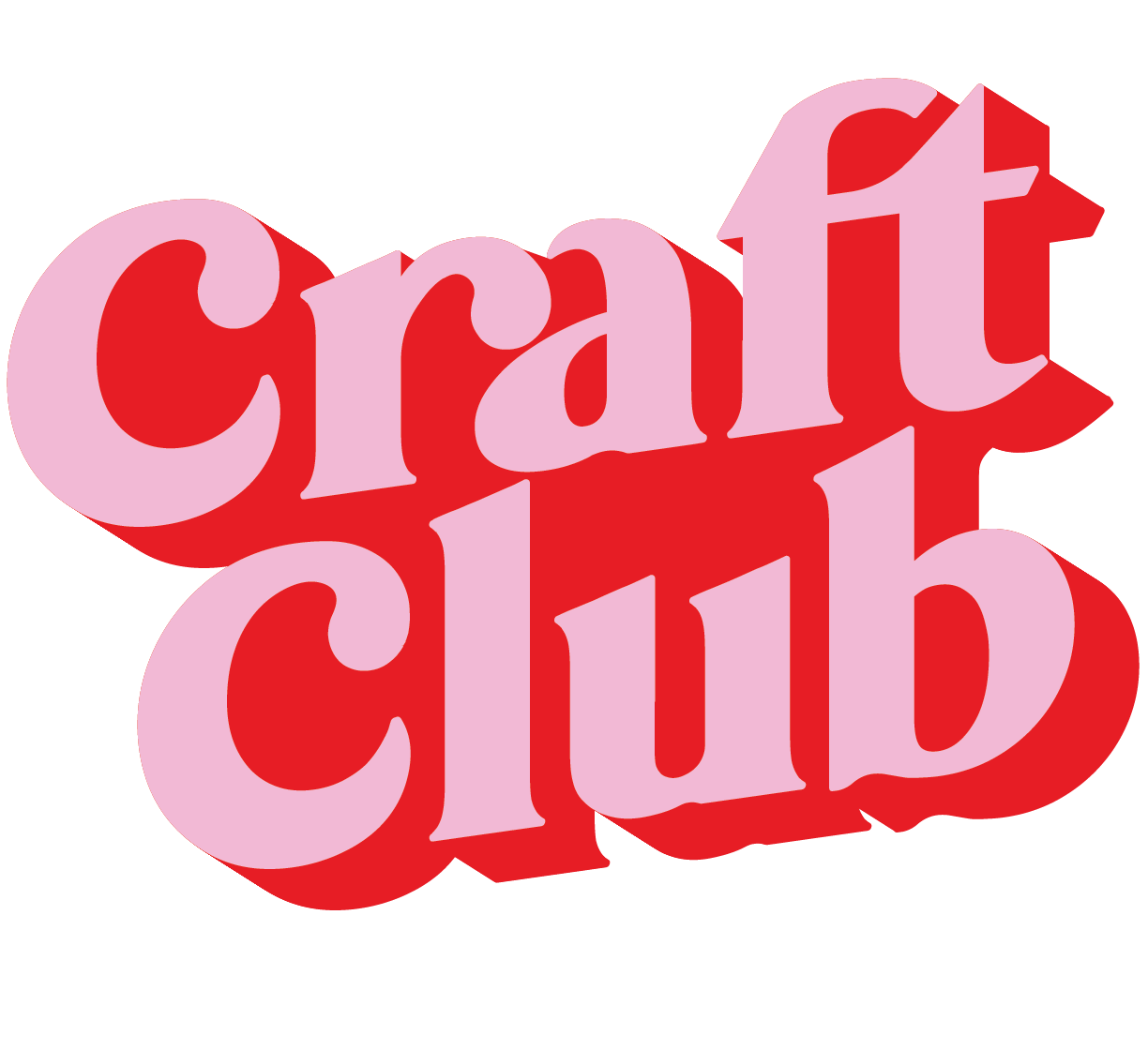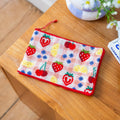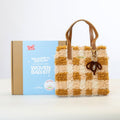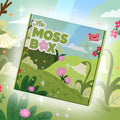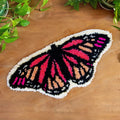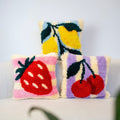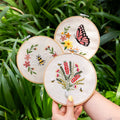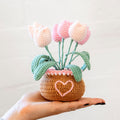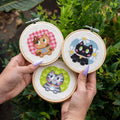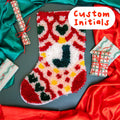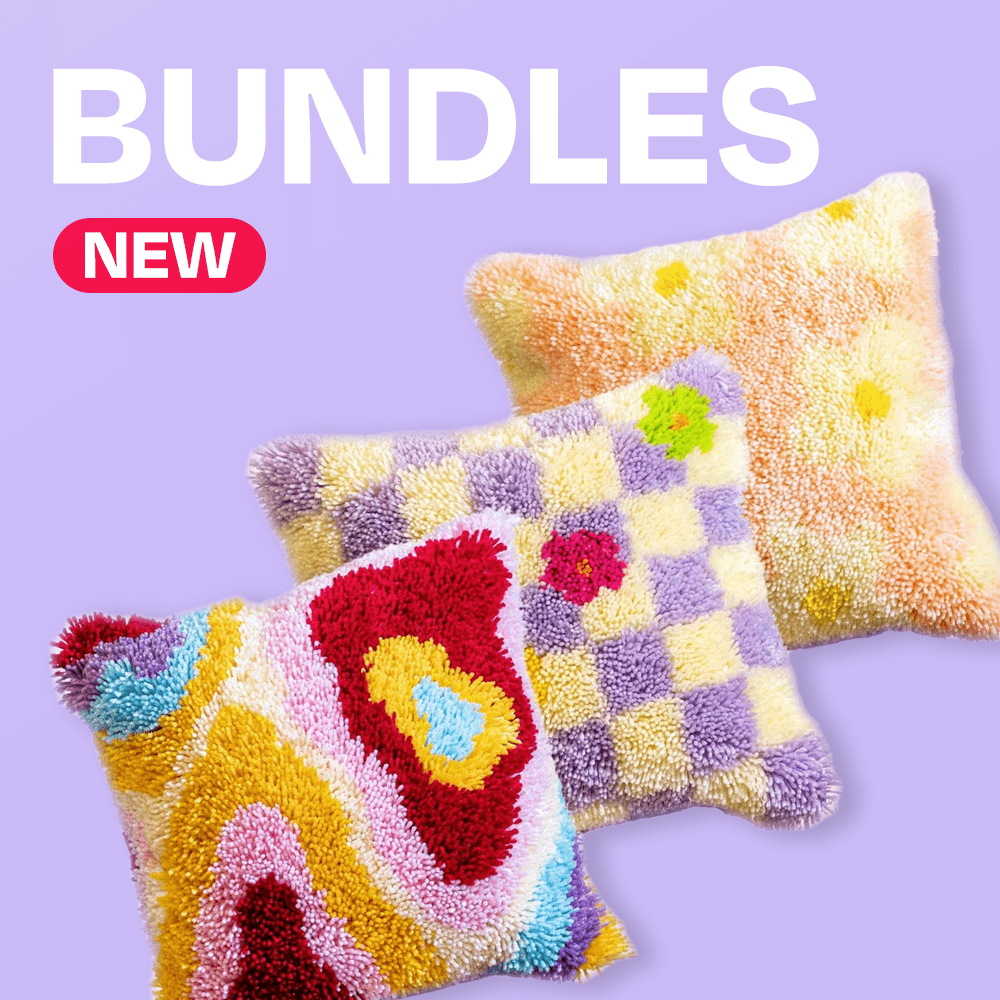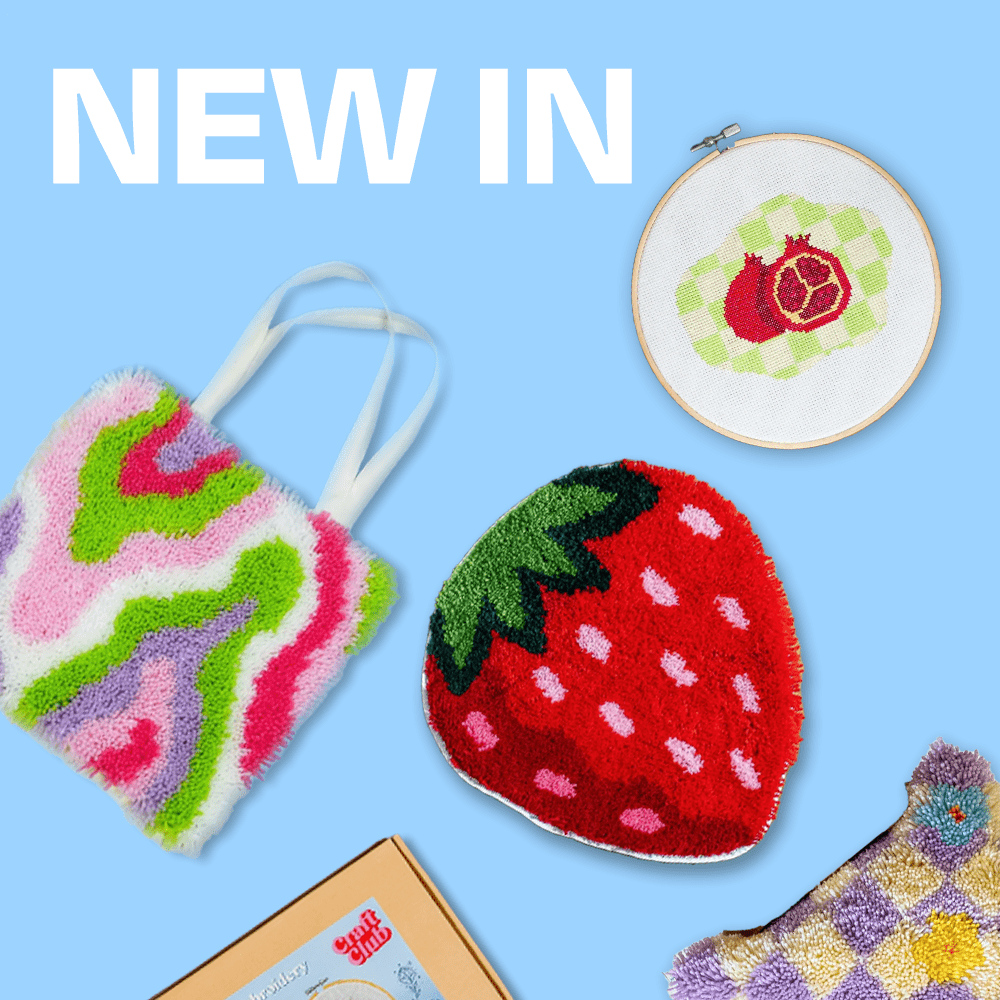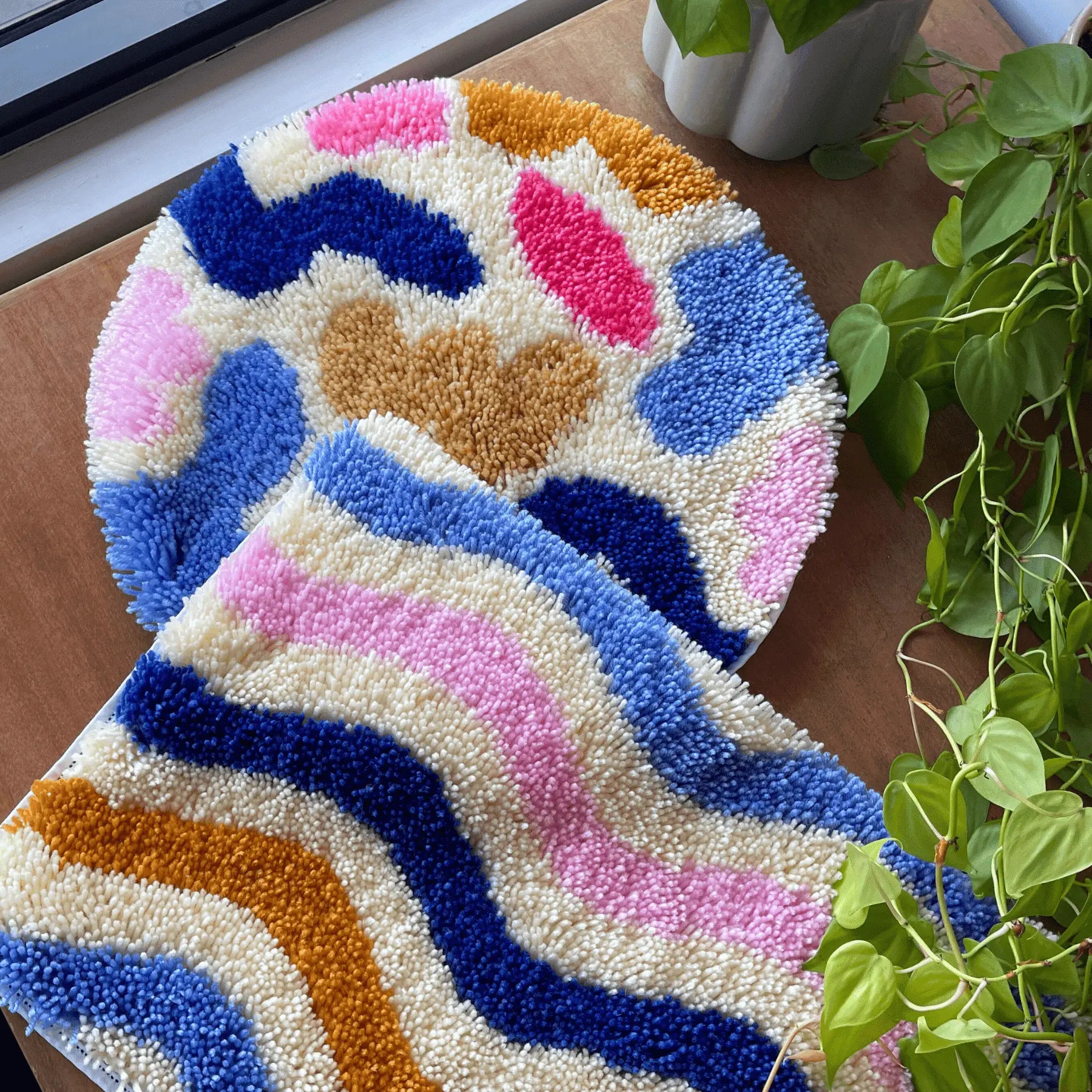Pumpkin Patch Coaster Guide & Tutorials
Welcome to the guide for your PUMPKIN PATCH Moss Coaster Kit!
Below you will find all the information you need to create your own mossy oasis to display on your desk or coffee table. We've designed this kit to be used as a coaster but it also makes a gorgeous decor piece for your wall or even as a landscape for miniatures.
🌼 🌼 🌼

Inside Your Kit
Your moss kit includes ...
Materials & Fibre:
⭐ Latch-hooking canvas base
⭐ Felt backing
⭐ Feather yarn in yellow
⭐ Milk yarn in 4x colours (light orange, dark orange, sage green and olive green)
⭐ Bobble yarn 2x colours (variegated green and variegated orange)
⭐ White cotton thread
Tools:
⭐ Pom pom scissors
⭐ Small latch-hook (different tool from our other kits)
⭐ Weaving needle
⭐ Steel sewing needles
⭐ Glue spatula
⭐ Glue stick for hot glue gun (optional)
Learning:
⭐ Online instructions and video tutorials
⭐ Pattern template
Optional additions:
Our kits come with everything needed to sew the coaster backing on, but you may want to use fabric glue or hot glue if you have it handy.
You may also want to use sharp craft scissors for cutting your base. Our Embroidery scissors work perfectly for this kit as they're small but have a sharp blade.
Pumpkin Patch Guide
What you'll find inside your kit:
Transferring your Stencil
Your first step is to transfer your coaster design from the stencil onto your latch-hooking canvas. To do this you'll need your canvas and a marker of some kind. We recommend using a sharpie or similar permanent marker, but a regular pen or drawing marker will work just fine.
Simply lay the canvas on top of your stencil and use the marker to trace the design behind it. The stencil matches our design with the smaller shapes roughly indicating where we will stitch each type of 'moss' in the following steps.
Feel free to get creative with the shape of your design, as your coaster doesn't have to be exactly like the stencil. You could make it a little larger or smaller depending on how you'd like to use it. Just remember to leave a 1/2 inch space between your coaster shape and the edge of the canvas.
TIP: Why not move the smaller shapes around within your coaster? You can get creative with the layout.
Step-By-Step Guide
Below you'll find each of the steps to making your coaster, with recommendations on the order to stitch each element. If you're a newbie to crafting it will be worth following this step-by-step, so that you can get comfortable with the techniques and tools used in this kit.
If you want to create your own variations, you can stitch each section in whichever order you want. So don't feel constrained by our guidelines.

Step 1: Bobbles (using orange bobble yarn)
Step 2: 'Hair' Moss (using light orange & dark orange milk yarn)
Step 3: Bobbles (using green bobble yarn)
Step 4: 'Hair' Moss (using light orange & olive green milk yarn)
Step 5: Feather Yarn Grass (using yellow feather yarn)
Step 6: 'Hair' Moss (using mostly sage milk yarn & a mix of the other colours)
Step 7: Adding Pom Poms & Embroidered Details (using all colours of milk yarn)
You can also use the image below to see the details of each element on your coaster.

Step-By-Step Video Guide
This video will give you a step-by-step overview of exactly how to finish your coaster! If you're already familiar with the techniques used for moss kits, this video will be the perfect guide to help you finish.
This video will show you the steps, but it is NOT a tutorial for the techniques. For detailed tutorials, please use the videos below. Each step will have a detailed tutorial attached so that you can fully understand the technique if this is your first time making a mossy creation.
1. Weaving your Bobble Yarn
The first area you want to fill in is your orange bobble yarn. For this you'll need your orange bobble yarn and your plastic latch-hook.
Follow the below video tutorial to fill in your bobble sections.
2. Creating 'Hair' Moss
This next textured section will be familiar to you if you've done one of our latch-hooking kits before. This time we use a slightly different technique to latch hook our yarn to look soft and 'hairy'.
You'll be using milk yarn for all of your 'hair' moss. In this first section you will use your light orange and dark orange colours. Cut then yarn into equal pieces using the video below. You'll be using 2x pieces per stitch to give a more dense feel. In order to make 2x pieces more manageable we use a different style of latch-hooking with this hook.
TIP: Because this coaster has a whole lot of 'hair' moss, you can create a rectangle template for trimming your yarn pieces to get it snipped even faster. To do this, cut a piece of cardboard that is approximately 1.5 inches across and 5 inches long. Take your milk yarn and wrap it around and around the 1.5 inch length of the cardboard, once its covered take your scissors and cut all along one edge. You'll be left with a bunch of 3 inch pieces! How easy was that?!
For this section, you want to use mostly your light orange yarn. Stitch some knots with 2x light orange pieces, and some knots with 1x light orange and 1x dark orange pieces. This doesn't need to be perfect or methodical, you simply want it to feel organic and have some pops of dark orange coming through.
Trimming: You can either trim your latch-hooked knots as you go, or all at once at the end. We recommend giving them a very small trim first, and if you're unhappy with the length trimming them again. You can always cut your yarn shorter, but if you trim it too much on the first snip, you cant add the length back again! So snip wisely.
Tiered Layers: Try to keep this first section of 'hair' moss longer as its at the top of your coaster. As you get to the other 'hair' sections, you can make these a little shorter, which will give a tiered effect. If this sounds complicated - don't stress! The lengths don't need to be perfect or precise to still give a tiered effect.
3. Weaving More Bobbles
Now its time to stitch your green bobbles on the right side of your coaster. You'll use the exact same technique as Step 1 for this section, you can refer to the video above if you need a refresh.
4. Creating More 'Hair' Moss
Now we're going to work on our second 'hair' moss section. This time you'll be using mostly olive green milk yarn and light orange milk yarn.
Using a similar technique to Step 2 you'll want to approximately half of your knots using 2x pieces of olive green yarn, and the other half using 1x olive green piece and 1x light orange piece. Once again, this doesn't need to be perfect, its all about creating organic colours blended together.
Tiered Layers: Trim this section slightly shorter than your first hairy section. This will allow you to see the two layers of textured yarn next to each other.
5. Weaving your Feather Yarn Grass
Now it's time to weave in the 'grass' underneath your moss. You'll be using your vibrant yellow feather yarn for this section.
Follow the below video tutorial to learn how to weave your grass section. Its a very simple technique, using your weaving needle you'll be stitching back and forth to cover the canvas section.
6. Creating Even More 'Hair' Moss
Sick of your 'hair' moss yet? We hope not! This last hairy section is my personal favourite because blending the colours is so fun.
For this last section on the left of your coaster, we're going to use mostly sage green yarn, with little pops of all the other milk yarn colours. So cut a bunch of sage milk yarn, and some smaller bundles of light orange, dark orange and olive green yarn.
The easiest way to stitch this section is to roughly stitch 1/4 with 2x sage green pieces. 1/4 with 1x sage green and 1x light orange piece. 1/4 with 1x sage green and 1x dark orange piece. And finally 1/4 with 1x sage green and 1x olive green piece.
This might seem complicated, but it really doesn't need to be precise at all. Simple alternate between the 4x colours listed above in random order. If you find you've stitched a lot of oranges in one section, mix it up with some greens. And vice versa.
Like our previous hairy sections, this is meant to feel organic and loose in texture. So don't fret about making your colours perfect - they'll look amazing when finished no matter what!
Trimming: Because this section is further away from your other 'hair' moss sections, you don't need to worry about the height of the yarn as much. Simply trim it to a medium length so it stands out next to your yellow feather yarn.
7. Adding Pom Poms & Shading Details
We're ready for the final touches! You'll be adding some personality to your coaster using two easy techniques: Pom Poms & Embroidery.
Starting with your Pom Poms, you'll need your light orange and dark orange milk yarn.
Use the following tutorial to learn to make pom poms. In this coaster, we've made 1x medium sized light orange pom pom with approximately 20x loops around. This is then trimmed and fluffed up.
We've then made a looped pom pom using the dark orange yarn, made to look like a pumpkin. You'll find this technique at the 22min mark in the tutorial, listed asthe 'Looped Flower' technique. For our pumpkin we have made it a medium size with approximately 20x loops around. The only difference with this pom pom is that when its tied, you don't cut the loops or trim it. You simply leave it as is and attach it to your base.
The last step is to add some extra texture using Embroidered Details. You'll be using your light orange and olive green milk yarn for this section. If you have leftover milk yarn in any other colours, you can also use any other colours you like.
You'll be stitching 2x large flowers in your light orange milk yarn, using the technique shown in our tutorial below.
You'll then stitch 2-3 leaves using your olive green yarn. To stitch the leaves, you're simply making 1x flower petal and leaving it as is, instead of turning it into a full flower. Too easy!
Backing your Coaster
Congratulations on finishing the main part of your coaster! Now you're onto the home stretch, its time to sew the back of your coaster.
There are 2x steps to finishing your coaster, which we show in the below tutorial. First you'll need to roughly trim the canvas edging and sew it down to the back of your piece.
Then it's time to back your coaster with your felt either with glue or by sewing it. If you're using it as a decor piece or to hang on the wall, it may be better for you to leave it at it's current stage. It will be easier to hang on a wall hook if the back is free from felt.
Sewing your Backing
Our kit includes all of the supplies you need to sew the backing of your coaster.
To sew your fabric you'll want to trace the shape of your coaster so that you can cut out the felt fabric to match the shape. You can do this with a pencil or pen.
You will then need to pin your felt backing to your coaster so you can begin sewing the edges. You can do this by using sewing pins, bulldog clips or even tacking the back with a hot-glue gun. I find bulldog clips the easiest method of holding my coaster to the felt.
Using 3-strands of your cotton thread, begin stitching your canvas to your mossy coaster using a whip stitch. This just means that you will whip your thread around and around the edge of your coaster as you go around. Don't worry if your stitches don't look perfectly neat, they'll blend into the grass on your coaster and won't be visible when you're finished.
Gluing your Backing
If you have any fabric glue handy or a hot glue gun then you can also glue the backing of your coaster. We've included a glue stick for a standard craft hot glue gun, as well as a glue paddle if you have fabric glue.
To glue your fabric you'll simply place fabric glue across the middle of your felt square and place your coaster on top. Allow it to dry so that the coaster is secure - you may want to put a heavy book on top of your coaster to add pressure. Once it's dry you can take a sharp pair of scissors to cut around the coaster.
You can then top up the glue on the edges, if any sections are lifting up.
Thank you!
I hope you've loved creating your very own moss coaster creation! All of these tutorials are personally written and filmed by me - Nakisah - the founder of Craft Club. I always love hearing from customers (whether you loved your experience, or there was something you'd like to give feedback on) so please come say hi at hello@craftclubco.com or send us a DM over on Instagram @craft.club.co.
I'm always working on ways to improve our kits so that they are as easy as possible for our incredible customers! So all feedback is welcome (but please be nice haha).
Nakisah x
